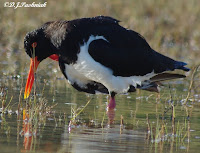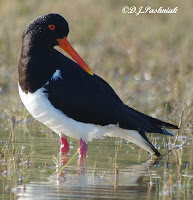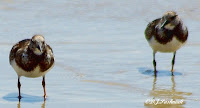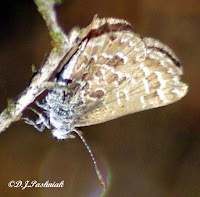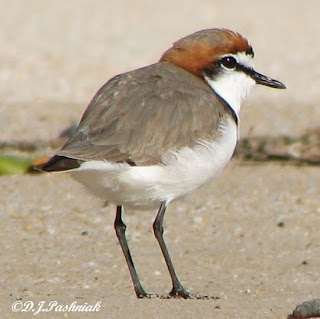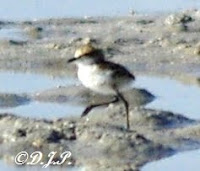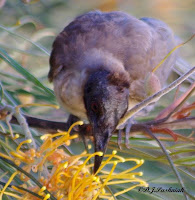
I was slowly and quietly following a Peaceful Dove when I went around a corner and saw a small brown bird busily scratching in the leaf litter. At my first glimpse I "hoped" for a Button-quail - but this was just too big. I started taking photos and was able to get quite close. It was not at all shy and as I got closer I realized that it was a very young Brush-turkey. There are lots of Brush-turkeys all through the bush out there and I have several times seen young ones running around like little long-legged chickens but this one was smaller than any I have seen before. My birding book describes the chick as having silky chestnut and brown down.


 (I posted a photo of an adult Brush-turkey crashing around up in a tree here.)
(I posted a photo of an adult Brush-turkey crashing around up in a tree here.)For the benefit of overseas readers - The male Brush-turkey builds a big mound (often 4 meters in diameter and up to 1 1/2 meters high) out of whatever vegetation is available and this is used as an incubator for the eggs. The female lays eggs in the mound and then walks off and leaves the rest of the job to the male. He watches over the mound and adjusts the temperature of the mound by adding or taking away vegetation from over the eggs. When the chicks hatch they immediately wander off and are independent from then on.
For more photos of birds visit the Bird Photography Weekly.
STOP PRESS: We have just had 16mm of rain! This is more than we have had for nearly 3 months. It's been so dry even some of the trees in my yard were beginning to droop. I hope this is the start of better weather!




